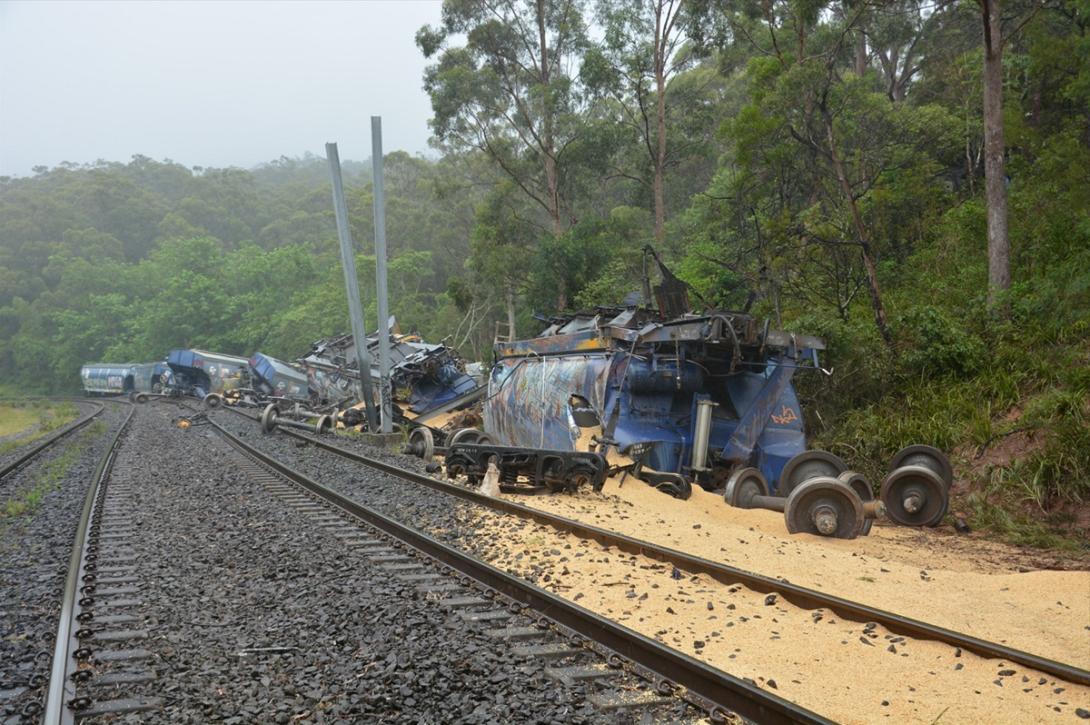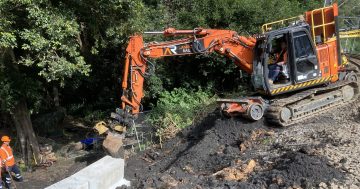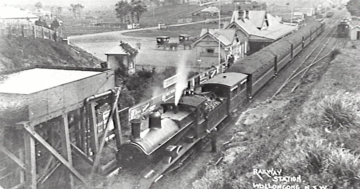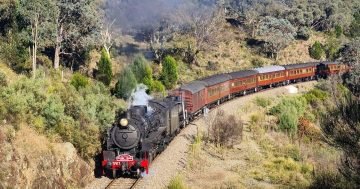
The aftermath of the crash. Photo: Australian Transport Safety Bureau.
Four years after a loaded train came off the tracks at Dombarton the Transport Safety Bureau has released its final report on the investigation into the incident.
Shortly before dawn on 15 December 2020, the crew of a Qube-operated grain train made up of two locomotives, 40 loaded wagons and one empty wagon, lost control on the descent into Unanderra on the Moss Vale to Unanderra line, one of the steepest sections of rail line in NSW.
The runaway train reached 100 km/h on a 30 km/h section of the winding track before the train separated at two points and 39 of the trailing wagons derailed and were destroyed.
Fortunately, the locomotives and first two wagons remained on the track, and the crew, a driver and driver’s assistant, were able to stop the train towards the bottom of the embankment.
No one was hurt, but there was substantial damage to track infrastructure.
A final report released on Wednesday (24 January) says issues related to weight, braking equipment, track conditions and operational procedures led to the 2020 incident.
The report from the Office of Transport Safety Investigations (OTSI), which conducts rail investigations in NSW on behalf of the Australian Transport Safety Bureau, noted 13 findings that were contributing factors, or increased risk in the accident.
“It was likely that several individual wagons were over their allowable weight limit, and the train as a whole was near, but likely not over its own maximum allowable tonnage,” OTSI’s Acting Chief Investigator Jim Modrouvanos said.
“Variability in the braking capability between wagons likely reduced the braking effort on some wagons during the steep descent.
“Low track adhesion caused by wet rail and track contaminant also affected train handling and locomotive dynamic braking.”
In addition to vehicle and environmental factors, the investigation found some of the driver’s decisions on the morning of the accident were likely affected by fatigue, but also that Qube’s relevant operational procedure did not account for locomotive configurations that maintained locomotive dynamic braking during emergency applications.
“This increased the risk of the train driver not using the emergency brake during a runaway, due to a mistaken understanding that the dynamic brake would cut out if emergency braking was applied,” Mr Modrouvanos said.
The final report urges operators to ensure their drivers understand how to operate their locomotives, trains have sufficient braking, are loaded within safe load limits, and are operated in accordance with their procedures.
“Qube and other affected rollingstock operators have subsequently taken action to review their locomotive configurations, and ensure their drivers have a clear understanding of the braking systems and can competently operate them in an emergency and in higher risk environments such as steep descents,” Mr Modrouvanos reported.
“This was on top of a number of safety actions that have been taken by Qube, Sydney Trains, and the Australian Rail Track Corporation in response to this accident.”















